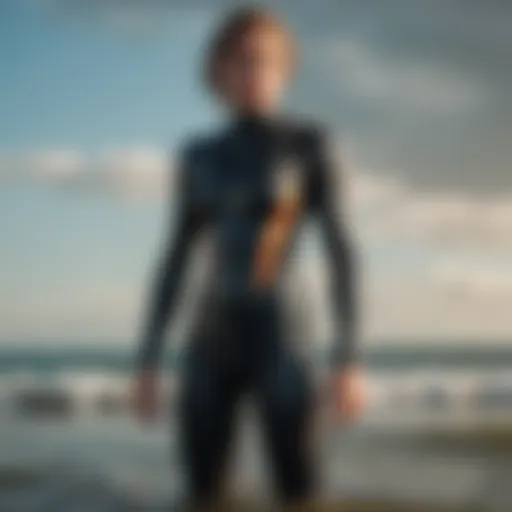Dive into Kitesurfing and Kiteboarding: Techniques & Safety
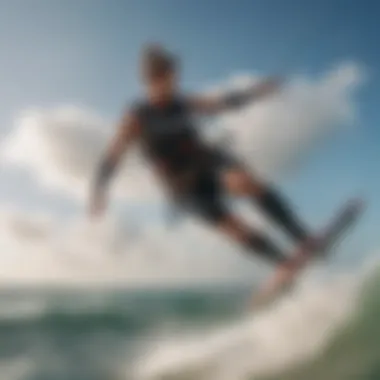

Intro
Kitesurfing and kiteboarding are more than just thrilling water sports. They represent a unique fusion of wind, water, and skill. Understanding both disciplines begins with grasping their foundations and implications. This exploration aims to go deep into the essential elements that define kitesurfing and kiteboarding. Whether you are considering taking up these activities or looking to elevate your current skills, recognizing key aspects like equipment, available locations, and safety practices is crucial.
Equipment Reviews
The right equipment can significantly influence your experience on the water. Various facets contribute to the overall performance of kitesurfing and kiteboarding gear. Manufacturers continually innovate, making it necessary to stay updated on the latest in kite technology, board design, and essential accessories.
Kites
Kites form the heart of kitesurfing and kiteboarding. Recent models demonstrate diverse features that cater to differing rider preferences and conditions. Important kite shapes include:
- Delta Kites: Known for their stability, they are excellent for beginners.
- C-Kites: Designed for experienced riders, they offer superb performance for tricks.
- Bow Kites: They provide great wind range and ease of use, suitable for various skill levels.
Various kite sizes are available, unmatched by material options ranging from polyester to ripstop nylon. Each material impacts weight, durability, and performance.
Some noteworthy brands include North Kiteboarding, Ozone, and Slingshot, each using innovative technology to advance designs and functionality.
Boards
Next to kites, the choice of board plays an integral aspect in performance. Kiteboarding boards come in several types:
- Twintip Boards: Commonly used for a variety of styles. They allow riding in both directions easily and providing a comfortable ride.
- Directional Boards: These boards are specifically designed for surfing conditions, offering excellent control and performance.
Understanding a board's design and construction will provide insight into riding style suitability. For example, a beginner might prefer a larger, broader board for stability, while experienced riders often lean toward a more agile, thinner design.
Accessories
Alongside the primary gear, proper accessories ensure safety, convenience, and enhanced performance. Key accessories typically include:
- Harnesses: They transfer pull from the kite to the rider's body, allowing for more efficient control.
- Lines: Quality lines will affect kite responsiveness.
- Pumps: Essential for inflating the kite promptly and reliably.
- Safety Gear: Including life jackets and helmets, These are necessary to provide protection and peace of mind.
Each tool serves a purpose vital to the overall kitesurfing experience, enhancing safety and performance while minimizing errors in the water.
Travel Destinations
Kitesurfing and kiteboarding aren't confined to your local beach. Learning about varied travel destinations can broaden the potential for fantastic adventures.
Popular Spots
The world is home to several picturesque spots suited for these actions, such as:
- Tarifa, Spain: Famous for strong winds and stunning beaches, a favorite among global kitesurfing events.
- Le Morne, Mauritius: Recognized for reliable wind conditions and thrilling waves.
- Cabarete, Dominican Republic: Offers warm waters and a friendly local riding community.
Exploring local amenities and attractions gives a much richer travel experience.
Off the Beaten Path
Some breathtaking kitesurfing spots are not in mainstream awareness.
- Soma Bay, Egypt: Exquisite scenery blended with an ideal climate.
- Cumbuco, Brazil: Renowned for its steady wind conditions.
Each hidden location often enjoys stunning landscapes, which provide unique experiences with fewer crowds.
Techniques and Tutorials
To augment your skills, engaging with both beginner and advanced techniques is essential.
Beginner Guides
A systematic approach to learning helps in acquiring fundamental skills. Topics sensitive to beginners include:
- Launching the Kite: Proper positioning and awareness of surrounding conditions are essential.
- Riding Technique: Consistency comes with practice, mainly focusing on body posture and balance.
- Turning and Landing: Knowing how to control the kite suitable in various conditions makes a difference in performances.
Advanced Skills
For those more experienced, refining techniques elevates the sport further. Areas of focus include:
- Jumps and Tricks: Utilizing pop and kite control for air maneuvering.
- Wave Riding: Understanding wave patterns increases versatility and style.
Advanced skills develop confidence and complexity in riding capability.
Safety Guidelines
The safety aspects of kitesurfing and kiteboarding must never be underestimated. Assessing weather conditions defines readiness.
Weather Conditions
Awareness is paramount; fluctuating wind and tides can shift safety of engagement. Factors include:
- Wind Patterns: Know how to interpret changes for safer rides.
- Currents and Tides: Grasping their behavior significantly helps recovery.
Emergency Protocols
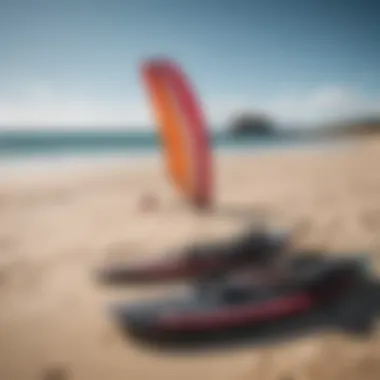

Thankfully, with proper preparation, mishaps can be significantly mitigated. Emergency measures involve:
- Known rescue techniques relative to common situations.
- Identifying issues promptly can save lives.
Equipment Maintenance
Component quality governs protection during activities. Regular checks ensure reliability of functions.
Kitesurfing and kiteboarding offer thrilling experiences that residents and travelers cherish. By blending essential knowledge, practice, and innovation, enthusiasts can dive into the culture that these water sports cultivate. Responsible riding, continuous learning, and equipment sophistication remain vital forces ensuring enjoyment and safety alike.
Prologue to Kitesurfing and Kiteboarding
Kitesurfing and kiteboarding are popular water sports that rely on the power of the wind to propel riders across the surface of the water. These activities attract a diverse audience, from thrill-seekers to professionals seeking competition. Understanding the distinctions and commonalities between them is essential for newcomers and those wishing to deepen their knowledge.
Both sports combine aspects of surfing, wakeboarding, and paragliding. Enthusiasts benefit from mastering kitesurfing and kiteboarding techniques not only for enjoyment but also for improving skills in varying water conditions. Preparation is key, as safety measures play a critical role in providing secured experiences.
Defining Kitesurfing
Kitesurfing originated as a way to harness wind power using a large kite, allowing riders to glide across water. This sport involves a specific set of skills characterized by two primary equipment components: a board and a kite. Riders stand on the board and control the kite using a control bar connected to a flying line. Using wind power, riders leap, perform flips, and carve through the water.
Above all, kitesurfing is recognized internationally and has evolved from its experimental roots to a structured and regulated sport. Licensing and certification processes are available for those wishing to advance to professional levels.
Distinguishing Kiteboarding
While kiteboarding may seem similar to kitesurfing, distinctions exist. Kiteboarding typically refers to the riding style that employs a smaller kite and focuses more on power than speed. The board used in kiteboarding is often designed for softer landings. Although both terms are interchangeably used, enthusiasts may notice subtle differences in techniques and equipment type.
For example:
- Kitesurfing is typically done in diverse water conditions, with the emphasis on aerodynamic maneuvers.
- Kiteboarding often prioritizes jumps and playful tricks above waves or in halfpipes.
These sport differences reflect varied styles and preferences of riders. By understanding them, participants can foster a richer experience.
Historical Context
Understanding the historical context of kitesurfing and kiteboarding is fundamental to appreciating this captivating sport. Tracing its origins reveals how innovation and human ingenuity converged to create an exhilarating way to engage with the elements. This backdrop is not merely academic; it informs current practices and the evolving landscape of gear, technique, and community.
Origins of Kitesurfing
Kitesurfing first emerged in France during the late 20th century, specifically in the 1980s, but its roots can be traced back even earlier. The confluence of kite flying and surfing forms the core of kitesurfing. Early experiments involved participants using large kites to harness wind energy and propel them across water. In the 1960s, exciting developments occurred with the introduction of the “KiteSail,” created by innovators such as the brothers Gijs Van Toorn and Alex Caizergues. They experimented on lakes in France, leading to a wave of interest in combining kiting with surfing.
The 1990s saw kitesurfing's drastic progression, with companies like Naish and Airush developing more effective kites specifically designed for water sports. As windsurfing gained popularity, the concept of utilizing kites began merging within that community. Initial kites were mainly designed for leisure or adaptation into surfing as an activity rather than a standalone sport.
Kitesurfing became an official sport by the late 1990s, when governing bodies began forming dedicated infrastructure. This increased visibility began attracting practitioners from various water sports, uniting elements of surfing, windsurfing, and paragliding. This combination of activities laid the groundwork for what we recognize now as kitesurfing.
Evolution of Kiteboarding
While often considered synonymous with kitesurfing, kiteboarding has its distinctions and evolved into its unique identity. Originating mainly as an alternative form of play, kiteboarding quickly aligned with kitesurfing in the sporting circuit. The notion of stepping on a board while tethered to a power source became a centerpiece for enthusiasts.
As the early 2000s approached, kiteboarding also acquired innovations in gear and strapless designs emerged. Brands such as Slingshot and Cabrinha started producing versatile boards specifically designed for freestyle, wave riding, and various other styles. This allowed riders greater flexibility and academic approach to technique rather than merely racing or trick attempts.
A significant shift in the evolution came with advances in kite technology. With better materials and design, manufacture decreased drag and when matched with more efficient boards made the kites combat-ready in various conditions. The pipeline of interest saw an upswing in public competitions as athletes displayed superb agility in complex maneuvers beginning with freestyle festivals, and in part contributing to high-level events recognized globally.
Today, kiteboarding stands not just as a competitive activity but has woven a distinct community fabric, allowing riders personal expression in both skills and values while simultaneously growing safety and awareness within the environmental real. Both kitesurfing and kiteboarding continue to shape recreational landscapes worldwide while growing larger audiences foment their uniqueness.
Understanding the Gear
Understanding the gear in kitesurfing and kiteboarding is essential for both safety and performance. The right equipment not only enhances the thrill and enjoyment of the sport but also significantly influences one’s ability to control the kite and navigate the water efficiently. In this section, we will delve into the specific components that make up the essential gear, explore the different types of kites and boards available, and consider the necessary safety gear and accessories.
Essential Equipment Components
The core elements of kitesurfing gear typically include the kite, board, control bar, lines, and harness. Each component serves a vital purpose.
- Kite: This is the heart of kitesurfing. It harnesses the wind power, lifting the rider above the water surface. Choosing the appropriate size, type, and design is crucial depending on the wind conditions.
- Board: The board is where the rider stands. Sizes and shapes vary, impacting stability, speed, and maneuverability. For example, larger boards often provide more surface area, promoting ease for beginners, while smaller boards offer more agility for advanced users.
- Control bar: It links the rider to the kite. The control bar allows for precision in maneuvering the kite and plays a significant role in steering and stopping.
- Lines: Typically made of high-modulus polyethylene, the lines connect the control bar to the kite. The lengths and materials of the lines influence kite performance and response time.
- Harness: It secures the rider to the control bar and transfers the kite's pull onto the body. A well-fitted harness is important for comfort and efficient energy transfer.
Understanding these components helps in appreciating how they interact with one another during kitesurfing experiences. It's an integrative process, and knowing the gear allows riders to make informed choices, ultimately enhancing their skills over time.
Types of Kites and Boards
When it comes to kites and boards, options are abundant. Kites can be primarily categorized into two types: inflatable kites and foil kites.
- Inflatable kites: Known for their durability and stability, these kites are generally preferred by beginner and intermediate kitesurfers. They use air cells, which are inflated to create lift and structure.
- Foil kites: These kites do not have a structure supported by air. They are lighter and more agile, suited for experienced riders who can manage more technical skills.
Board varieties cater to different styles and rider levels:
- Twin tip boards: The most common style, making it easy to ride both directions, perfect for learning and freestyle.
- Directional boards: Jotted for reliable performance when riding with the wave or wind direction, often preferred by wave riders.
- Foil boards: These improve lift at lower speeds, making gliding over the water easier while enabling greater freedom in smaller wind conditions.
Selecting the right kite and board type based on one’s skill and local conditions can shape a kitesurfer's experience dramatically. Researching and testing different combinations remains essential ahead of making each purchase.
Safety Gear and Accessories
Safety must not be an afterthought in kitesurfing. Essential safety accessories include a helmet, impact vest, and possibly a floatation device.
- Helmet: Protects against head injuries, particularly relevant during falls or when navigating crowded areas.
- Impact vest: Provides maximum buoyancy while protecting the torso and ribs against strikes from the board or water surface.
- Floatation device: Though less common, a personal flotation device might offer additional safety, especially in challenging water conditions.
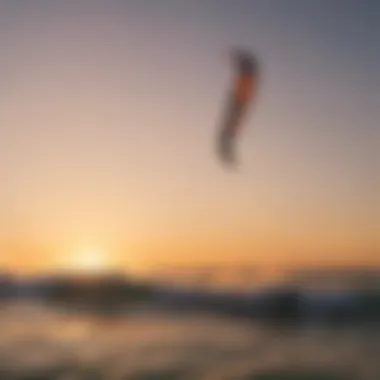

Other useful accessories could include a knife for emergencies, a repair kit for quick fixes on the water, and leashes that tether the board to the rider.
**
Techniques and Skills
Understanding the techniques and skills necessary for kitesurfing and kiteboarding is essential for both safety and enjoyment. Mastery of specific maneuvers not only enhances a rider’s capability but also boosts confidence in the water. The right techniques can turn a thrilling activity into a highly controllable sport. Riders with strong skills are often better equipped to deal with unpredictable conditions. Therefore, internalizing these concepts serves both as a foundation and advancement for all enthusiasts of the sport.
Basic Maneuvers for Beginners
For those just starting out, learning basic maneuvers establishes a solid base. Recognizing common beginner techniques can assist new kitesurfers in becoming comfortable on the water. Below are fundamental skills every beginner should focus on:
- Body Dragging: This is the technique of using the kite's power to pull oneself through the water without the board. It helps beginners to understand kite control and adjust to water movement.
- Water Start: Learning to get up on the board after being dragged through the water is crucial. By practicing the positioning of the board and kite simultaneously, beginners become more adept at execution.
- Transitioning: This technique involves changing directions smoothly. Mastering transitions allows for adjustments without losing momentum, an essential element for prolonged riding sessions.
- Riding Upwind: This skill focuses on making consistent advancements against the wind. This ability is fundamental, allowing riders to maintain their position in preferred locations.
Incorporating these basic maneuvers will gradually empower beginners to tackle challenging environments, steering towards more advanced techniques in due course.
Advanced Techniques for Experienced Riders
As riders progress in their skills, delving into advanced techniques becomes essential to push their limits. These methods train experienced kitesurfers for more challenging maneuvers:
- Jumping: This includes executing proper techniques to achieve lift and landing accurately. Knowledgeable riders learn to time kite movement with jumps for optimal height and control.
- Twists and Spins: Riders can progress with both rotational tricks and other inverted maneuvers in the air. This enhances creativity and showcases skills that appeal in competitions.
- Kiteloop: This advanced technique engages the kite in looping during a jump. Kiteloops generate impressive speed and power, yet they require a fair level of precision and timing.
“Mastery over advanced techniques significantly differentiates skilled riders from hobbyists, enabling them to explore complex environments.”
- Handling Strapless Riding: This method focuses on riding without the board’s straps. It presumably enhances a rider’s balance and flexibility in maneuvering.
Presented correctly, these skills result in moments of elegance paired with fierce performance. The progression into advanced territory not only serves the rider's technical growth but aims to cultivate a deeper connection with the sport.
Safety Considerations
The safety of kitesurfers is paramount. This sport, while exhilarating, comes with inherent risks due to the dynamic conditions of the ocean or the environment. Understanding and managing these risks determine not only the enjoyment of the sport but also the physical well-being of the participants. Prioritizing safety means better experiences and the potential for longer lives in kitesurfing. Key considerations include understanding your personal skill level, the mechanics of your equipment, and being aware of environmental conditions.
Identifying Risk Factors
Risk factors in kitesurfing can arise from several different sources. A significant element is the wind conditions. Raptors in high winds create challenges for even skilled riders. Equally, inadequate equipment maintenance may lead to failures when the flyer least expects them.
Key Risk Factors Include:
- Wind Strength and Direction: Kites respond differently on varying days. Strong winds can lead to uncontrolled speed and drastic effects on balance.
- Equipment Conditions: Regular inspection is necessary; any worn lines or fraying can result in catastrophic equipment failure.
- Water Conditions: Be aware of tides, buoyancies and even difficult currents.
- Environmental Obstacles: Rocks, reefs, and marine life might pose concealed dangers.
Mentorship or insight from experienced locals can provide valuable information on environmental risks before launching into unfamiliar territory.
Best Practices for Safe Riding
Implementing best practices is crucial for ensuring safety on the water. Preparation and awareness can minimize the potential for accidents. Here are a few methods kitesurfers should regularly employ:
- Check Your Gear: Ensure that all equipment is economical and durable, with full compatibility for your riding needs. Each session begins with a thorough inspection
- Know Your Limits: Be honest with yourself when assessing your skill level. Choose conditions that suit your abilities.
- Environmental Awareness: Continually stay informed on wind changes and be prepared to adapt to sudden weather shifts.
- Buddy System: Connect with other riders. Always have a partner to watch you, and look out for each other while you are on the water.
- Emergency Know-How: Familiarize yourself with recovery procedures for both kites and boards. Understanding the proper techniques for self-rescue helps manage unforeseen circumstances.
Effective decision making regarding these practices translates into going beyond skillsets, benefiting the heart of kitesurfing—enjoyment.
Safety is engrained into every element of kitesurfing. Each practitioner must take on the responsibility seriously to cultivate a thriving community.";
Choosing the Right Location
Choosing the right location for kitesurfing and kiteboarding is crucial for both safety and enjoyment. Each spot offers unique conditions, which greatly affect the quality of the experience. Some vital considerations include wind patterns, water currents, and local regulations. Selecting an appropriate site not only enhances performance but also minimizes risk. This is especially important for inexperienced riders as initiating their journey in the right environment fosters confidence.
Top Destinations for Kitesurfing
When talking about ideal spots, many popular destinations exist around the globe that attract both professionals and newcomers. Locations como Tarifa in Spain are famous for their reliable wind conditions, making it a perfect training ground. The warm tropical waters of the Caribbean Sea, including spots like Cabarete in the Dominican Republic and Kite Beach in Maui, attract enthusiasts looking for idyllic weather alongside thrilling watersports. Other known locations such as the flat lagoons of the Brazilian coast or Hood River in Oregon also enrich the global kitesurfing community.
Here are some notable kitesurfing destinations:
- Tarifa, Spain
- Cabarete, Dominican Republic
- Maui, Hawaii
- Hood River, Oregon
- Flat water spots in Brazil
This variety ensures that every kitesurfer can find a location that suits their skill level and preferences.
Local Conditions to Consider
Understanding local conditions is essential to ensure a pleasurable riding experience. Factors such as wind speed and direction, tides, and potential hazards can influence the overall safety and enjoyment while kitesurfing. Wind speed ideally ranges between 12-25 knots. This is comfortable for most riders. Wind gusts can potentially lead to erratic control, so riders must be informed about local weather patterns.
Key local aspects to check before choosing a occassion include:
- Tide Levels: Some spots change fundamentally depending on the tide, with sandbanks or
Community and Culture
The realm of kitesurfing and kiteboarding thrives not only on technical skills, but also on a vibrantly interconnected community. This culture encompasses a diverse range of experiences, knowledge sharing, and support among riders. It is essential to understand how it functions as a catalyst for growth within the sport.
Kitesurfing Groups and Clubs
Considerable strength lies within kitesurfing clubs and groups. These local organizations foster community engagement and encourage collaboration among kitesurfers of all levels. They can be found in many popular kitesurf spots and generally provide an opportunity for members to connect.
Benefits of Joining Groups
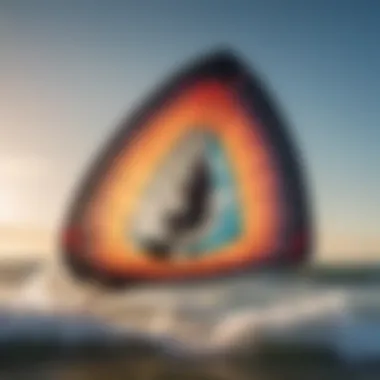

- Networking Opportunities: Connect with other kitesurfers who share similar passions, and exchange insights about the sport.
- Skill Development: Many clubs organize training events and workshops aimed at improving maneuvers and safe riding techniques.
- Group Rides and Trips: Clubs often arrange joint outings, enabling participants to explore new locations with the guidance of more experienced riders.
Participation in such groups can notably enhance the riding experience by bringing individuals into broader networks. Newcomers frequently feel less intimidated when they join an inviting environment of peers.
Competitions and Events
Competitive events play a vital role in the culture and energize kitesurfing as an evolving sport. From local competitions to large-scale international events, these gatherings highlight skill, creativity, and innovation among riders.
Each contest showcases individuals vying for recognition and prize rewards. To succeed requires dedication to the sport and a commitment to relentless practice.
Categories of Competitions
- Freestyle Events: Riders are judged on tricks and personal style, focusing on creativity and execution.
- Race Events: This involves speed and precision, testing competitors’ strategical maneuvers on the water.
- Wave Riding Competitions: Highlighting skill in riding ocean swells, these contests require a deeper understanding of the surf environment.
Relations formed at these events contribute to the overall growth and inspiration within the community. They help to build future generations of exceptional kitesurfers, with many eventual champions rising through community-focused initiatives.
*"Becoming part of your local kitesurfing community can greatly enhance your experience, both out on the water and behind the scenes."
Engaging in the community is not only beneficial for the individual; it also strengthens the sport itself. Thus, the connective culture encapsulates friendship, developments in skills, and respect for fellow kitesurfers.
Recent Developments in Equipment Technology
Recent advancements in kitesurfing and kiteboarding equipment have been significant. As the sport evolves, manufacturers arise new technologies aiming to improve performance and safety. This section discusses these developments and their relevance for enthusiasts at all levels.
Innovations in Kites
In the past few years, the kites themselves have seen major changes. New materials and design strategies enhance durability and responsiveness. These innovations allow riders to experience better lift and handling, essential for mastering tricks and maneuvers.
Key innovations in kites include:
- Lightweight Fabrics: Modern kites often utilize lighter shin fabrics. This decreases overall weight, making it easier to handle the kite despite its size.
- Streamlined Designs: Many brands are crafting kites with more aerodynamic shapes. This minimizes resistance in the air, resulting in better control and efficiency.
- Inflation Systems: Quick inflation and deflation mechanisms continue being refined. Solutions like one-pump systems offer fast setup time and easier maintenance.
These advancements enhance rider performance, which leads to a more enjoyable experience on the water. They can make kitesurfing more accessible as well because newer models often come with user-friendly designs intended for all skill levels.
Advancements in Boards
The evolution of kiteboards has also followed suit. Boards are now made from advanced materials that provide better buoyancy and reduced drag. This increases speed and stability, benefiting both beginners and experts.
Highlights in the realm of boards include:
- Carbon Fiber Construction: Carbon fiber significantly reduces weight while providing high strength and flex. This improves responsiveness and allowsusers to try new tricks without fear of breakage.
- Early Planning Designs: Newer boards are designed to get up on the water quickly. This is especially useful in lighter winds, making it possible to ride even in less-than-ideal conditions.
- Customizable Options: Many manufacturers offer boards with modular components. Riders can tailor their equipment based on their preferences or styles.With these innovations, kitesurfers can push themselves to new limits.
The developments in both kites and boards demonstrate a clear trend towards making the sport more engaging and enjoyable. As fellow riders benefit from these changes, continuing to monitor industry progression becomes crucial.
"Staying informed about recent developments in equipment technology not only helps you optimize your kitesurfing experience but also gives you insights needed to make shrewd purchasing decisions in a competitive market."
Environmental Impact and Sustainability
Understanding and addressing the environmental impact of kitesurfing and kiteboarding is crucial for the sport's future. As more individuals engage in these activities, the potential for ecological harm also increases. Key areas of focus include how kitesurfing interacts with natural ecosystems, the footprint of equipment production and disposal, and sustainable riding practices.
Proponents of kitesurfing both highlight its connection to the ocean and urge caution against carelessness that could damage marine environments. Sustainability, in this context, is not just a buzzword; it embodies a commitment to responsible enjoyment of nature.
Understanding the Ecological Footprint
The ecological footprint of kitesurfing encompasses multiple aspects. Importantly, it includes the materials and processes involved in manufacturing kites and boards. For instance, plastic production from petroleum can result in air and water pollution. Additionally, the community's size impacts shoreline activities, where habitat disturbance can arise.
Contributions to Environmental Issues:
- Ocean Pollution: Kitesurfing gear can become waste that harms marine biodiversity.
- Local Ecosystems: Increased foot traffic on beaches may disrupt native flora and fauna.
- Carbon Emissions: Transporting equipment generates emissions that affect the atmosphere.
Strategies for Eco-friendly Kitesurfing
Reducing the environmental impact of kitesurfing involves commitment and action. Here are several strategies participants can adopt to forge a path toward more responsible practices:
- Responsible Gear Disposal: Recycle or repurpose damaged gear instead of sending it to landfills.
- Choose Sustainable Brands: Support manufacturers that prioritize eco-friendly materials and use ethical production processes.
- Practice Leave No Trace: Ensure that all personal items leave with you. This helps maintain the natural beauty of the highly valued riding locations.
- Select Responsible Locations Conduct research on potential area impacts for your riding spots. Consult local environmental guidelines to minimize disturbance to wildlife.
- Advocate for Protected Areas: Engaging in community discussions can help establish protected areas free from kitesurfing to encourage wildlife proliferation.
“Through collective efforts, the kitesurfing community can create sustainable practices that respect our oceans and beaches for all.”
Engagement with these strategies allows kitesurfers not only to enjoy their sport but also to ensure the protection of ecosystems they engage with. The promotion of sustainability within kitesurfing fosters an environment of respect and awareness, affording the sport a legitimate future as a responsible recreational choice.
Finale
Kitesurfing and kiteboarding represent not just sports but a blending of community, equipment innovation, and environmental responsibility. As we reflect on their histories and powers, we notice the importance of both understanding and practicing safe riding. Increasing awareness of local conditions ensures that every ride is not only exhilarating but also informed.
Summary of Insights
This article has explored various dimensions surrounding kitesurfing and kiteboarding. From the origins of these sports to the gear needed and the advanced techniques that enhance performance, each aspect contributes essential knowledge for practitioners. Here are key takeaways:
- Historical Context: Understanding how kitesurfing evolved allows riders to appreciate the sport's rich heritage.
- Equipment Knowledge: Familiarity with gear enhances the kitesurfing experience, making it safer and more enjoyable.
- Safety Protocol: Identifying potential risks and adhering to best practices can vastly enhance rider safety.
- Community Engagement: Connecting with fellow enthusiasts fosters a culture of support and shared knowledge, enrichening personal experiences.
- Environmental Awareness: Acknowledging the ecological footprint of kitesurfing advises responsible behaviors that can sustain the practice for future generations.
Practitioners at all skill levels should find value in these insights to elevate their kitesurfing and kiteboarding journey.
Future of Kitesurfing and Kiteboarding
The future of kitesurfing and kiteboarding looks promising with several aspects to consider:
- Technological Advancements: Continuous innovation in kite and board design is yielding lighter, stronger materials while improving performance.
- Sustainability Efforts: The community is increasingly aware of environmental impacts, leading to a rise in eco-friendly equipment and practices. Such changes aim to preserve these beautiful riding locations for future generations.
- Increased Accessibility: With more schools, facilities, and rental opportunities springing up worldwide, access to kitesurfing is growing ever wider.
By combining technology, safety, and community involvement, the sport is likely to attract new participants, ensuring its relevance for years to come.
Kitesurfing and kiteboarding evolve with every passing year, making it critical for participants to stay informed, connected, and responsible as they engage in these thrilling activities.



